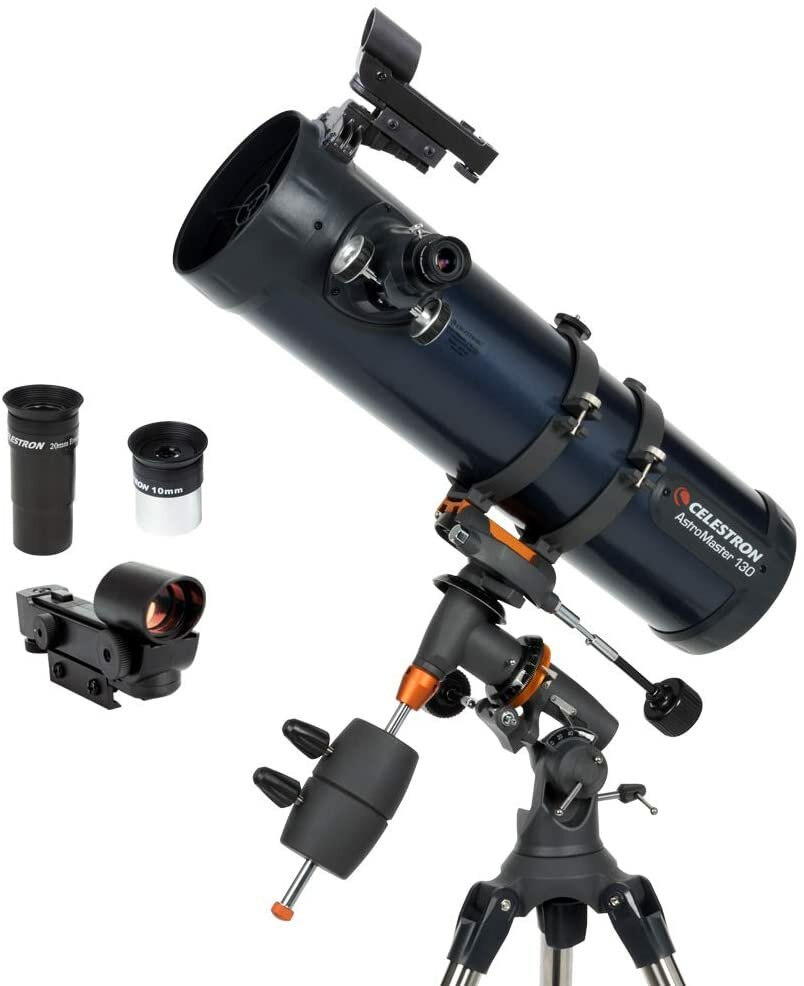What makes a good telescope - Are you considering of purchasing your first telescope? There are so many options to consider when you first start your search, which can be overwhelming. It's simple to get swept up in the thrill of a new telescope and neglect to consider how useful it will be for your way of life. But it will be much simpler to choose a telescope in your price range that you will use the most if you have a basic understanding of the various telescope sizes, kinds, and mounts.
Bigger is better, or is it?
When selecting a telescope, the aperture—or the diameter of its primary mirror or lens—should be your top priority. The telescope can view fainter objects and can reveal more detail on nearby, bright objects like the Moon, the larger its diameter. The planets, the Moon, and Jupiter's moons may all be seen clearly by telescopes with a 4 or 5 inch diameter. With a scope this narrow, seeing Neptune and Uranus can be challenging, but it's not impossible. For a complete beginner, a telescope of this size is absolutely a great place to start.
You'll need something larger than 4 or 5 inches if you want to take your stargazing to the next level and see fainter deep-sky phenomena like star clusters, galaxies, and nebulae. However, you should think about how convenient it would be to use a large telescope on a regular basis before buying the biggest telescope you can afford in order to be able to see more objects. Will it be worth your time to haul it out into the backyard every time you need it? Will you be comfortable bringing it to your preferred secluded spot or a stargazing event? Do you want something that young children can also use?


What makes a good telescope? Magnification
Although magnification is a feature you may frequently see advertised, a telescope's aperture is more essential. If you have multiple eyepieces, you can adjust the telescope's magnification because it depends on both the focal length of the telescope and the eyepiece you're using.
But even with a strong magnification, the aperture controls how much information you can see. Because your telescope can't gather enough light to show you any more information, having a small telescope with a high magnification will only allow you to zoom in on a hazy image. The amount of detail you can see can also be affected by the atmosphere. Magnification only goes so far since our atmosphere obscures details even under the clearest of skies.
Conclusion: Magnification isn't everything! For a beginning telescope, a magnification of more than 200x won't be of much use.
Mount
You also need to take into account a telescope's mount. This maintains the telescope's balance and enables you to easily rotate it to observe different objects on the sky. The two basic categories of mounts are equatorial and altitude-azimuth, or alt-az. Like a tripod for taking pictures, an alt-az mount also moves up and down (altitude) and from left to right (azimuth). Equatorial mounts have two axes, one of which is parallel to the Earth's axis of rotation. This makes it simple to rotate the telescope around to follow a moving object throughout the course of the night.
Beginners may find equatorial mounts to be a little less straightforward, therefore I advise sticking with an alt-az mount. However, you might want to think about an equatorial mount if you're really interested in following objects as they move through the night sky. To set up an equatorial mount you need to position one of the axes to Polaris, also known as the North Star, while using it for the first time.
There are also telescopes with computerized mounts that let you select and watch an object from a database. The telescope then moves to that object on its own. Because you command the telescope to "go to" a particular object, they are also known as GoTo telescopes. These make it simple for beginners to locate interesting objects, and they are useful in locations with a lot of light pollution where it can be challenging to locate reference objects using a sky map. However, a computerized mount telescope might not be the ideal place to start if you truly want to learn about the night sky.
What makes a good telescope? Cost
When it comes to telescopes, price is a factor. Anything that costs less than $100 may be too difficult to use and not provide you with a good viewing experience. Beginner telescopes of excellent quality typically cost between $200 and $400, with computerized mounts costing more than that.
The ability to see fainter objects will be possible with bigger, more costly telescopes, but keep in mind that smaller telescopes will be simpler to handle, use, and store when not in use. You don't need to spend a lot of money to have a good view of the sky because smaller telescopes are generally less expensive.
